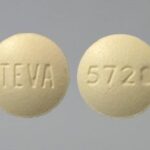Are you curious about What Is Leather Made Of and its diverse applications? At WHAT.EDU.VN, we provide the answers you seek, offering a detailed exploration into the composition of this versatile material, alongside information on leather goods, its benefits and its types. Dive in to discover the fascinating world of leather crafting and its enduring appeal, with insights on leather manufacturing and ethical sourcing.
1. What Is Leather Made Of? The Basics
Leather is primarily made from animal hides or skins through a process called tanning. The most common source is cattle, but leather can also be made from sheep, goats, pigs, and even more exotic animals like crocodiles and snakes. Tanning preserves the hide, preventing it from decaying and making it durable and flexible for various uses.
Question: What specific animal hides are most commonly used for leather production?
Answer: While cattle hides are the most prevalent, the choice of animal hide significantly impacts the leather’s characteristics and intended application. Let’s break down the common sources:
- Cowhide: Cowhide is the most common due to its availability and versatility. It’s used in a wide range of products, from furniture to footwear, thanks to its thickness and durability.
- Sheepskin: Known for its softness and warmth, sheepskin is often used for clothing, linings, and rugs. The wool remains attached in some cases, adding to its insulating properties.
- Goatskin: Goatskin is durable yet supple, making it ideal for gloves, wallets, and bookbindings. It’s also known for its distinctive grain pattern.
- Pigskin: Pigskin is breathable and relatively inexpensive, often used for linings, sporting goods, and some apparel. Its distinctive hair follicle pattern is a key identifier.
2. The Tanning Process Explained
The tanning process is crucial for transforming raw animal hides into stable, usable leather. Here’s a breakdown of the main methods:
2.1. Vegetable Tanning
Vegetable tanning uses natural tannins found in tree bark and other plant materials. This method is one of the oldest and most traditional.
Question: What are the advantages and disadvantages of vegetable-tanned leather?
Answer: Vegetable tanning is eco-friendly and produces leather with a rich, warm tone and distinct aroma. Let’s weigh the pros and cons:
Advantages:
- Environmentally Friendly: Uses natural tannins, reducing the environmental impact.
- Unique Appearance: Develops a rich patina over time, enhancing its aesthetic appeal.
- Durability: Produces strong, durable leather suitable for belts, saddles, and tooling.
- Distinct Aroma: Has a characteristic earthy smell that many find appealing.
Disadvantages:
- Time-Consuming: The tanning process can take weeks or even months.
- Cost: Generally more expensive due to the longer processing time and natural materials.
- Stiffness: Can be stiffer compared to chrome-tanned leather, requiring a break-in period.
- Water Sensitivity: More susceptible to water damage and staining if not properly treated.
2.2. Chrome Tanning
Chrome tanning utilizes chromium salts to quickly tan the hide. It’s the most common method used today due to its efficiency.
Question: How does chrome tanning compare to vegetable tanning in terms of environmental impact?
Answer: Chrome tanning is faster and cheaper but raises environmental concerns due to the use of chemicals. A detailed comparison:
Environmental Impact of Chrome Tanning:
- Chemical Usage: Employs chromium salts, which can be harmful if not properly managed.
- Wastewater: Produces wastewater containing chromium, requiring careful treatment to prevent pollution.
- Faster Process: Significantly reduces the time needed for tanning, leading to higher production volumes.
- Cost-Effective: Lower production costs make it a popular choice for mass-produced leather goods.
Environmental Impact of Vegetable Tanning:
- Natural Materials: Utilizes tannins from plant sources, reducing reliance on synthetic chemicals.
- Biodegradable Waste: Produces waste that is more biodegradable compared to chrome tanning.
- Slower Process: Longer tanning times result in lower production volumes.
- Higher Costs: Increased processing time and natural materials contribute to higher costs.
2.3. Alternative Tanning Methods
Other tanning methods include aldehyde tanning, which uses glutaraldehyde or oxazolidine, and synthetic tanning (syntans), which uses aromatic polymers. These methods aim to address some of the environmental concerns associated with chrome tanning while offering different properties.
Question: What are some emerging sustainable tanning methods in the leather industry?
Answer: The leather industry is exploring innovative, eco-friendly tanning processes to minimize environmental impact. Here are some promising approaches:
- Olive Leaf Tanning: Uses extracts from olive leaves, a waste product of olive oil production, providing a sustainable alternative to traditional tannins.
- Mimosa Tanning: Employs tannins derived from the mimosa tree, which is fast-growing and requires minimal water and pesticides.
- Enzyme Tanning: Utilizes enzymes to prepare hides for tanning, reducing the need for harsh chemicals and lowering wastewater pollution.
- বায়ো-ট্যানিং (Bio-Tanning): Employs microorganisms to prepare hides for tanning, reducing the need for harsh chemicals and lowering wastewater pollution.
- Aluminium Tanning: Involves the use of aluminum salts in tanning process.
- Fungi Tanning: Employs microorganisms to prepare hides for tanning, reducing the need for harsh chemicals and lowering wastewater pollution.
3. Types of Leather: A Comprehensive Overview
Leather is categorized based on the part of the hide used and the tanning process. Here are some common types:
3.1. Full-Grain Leather
Full-grain leather is the highest quality, made from the top layer of the hide. It includes all of the natural grain, making it strong and durable.
Question: What are the defining characteristics of full-grain leather and its best uses?
Answer: Full-grain leather is prized for its natural beauty and durability. Key characteristics and ideal applications:
Characteristics:
- Natural Grain: Retains the original grain pattern, showcasing unique markings and imperfections.
- Durability: The strongest and most durable type of leather, resisting wear and tear.
- Patina Development: Develops a rich patina over time, enhancing its aesthetic appeal.
- Breathability: Offers excellent breathability, preventing moisture buildup.
Best Uses:
- High-End Furniture: Sofas, chairs, and other furniture pieces that require longevity and a luxurious look.
- Premium Footwear: Boots, shoes, and other footwear designed for durability and comfort.
- Belts and Accessories: Belts, wallets, and bags that benefit from its strength and natural appearance.
- Outdoor Gear: Backpacks, saddlebags, and other gear that needs to withstand rugged conditions.
3.2. Top-Grain Leather
Top-grain leather is the second-highest quality, where the top layer is sanded and finished to remove imperfections. It’s more flexible and has a smoother surface than full-grain.
Question: How does top-grain leather differ from full-grain in terms of appearance and durability?
Answer: Top-grain leather offers a balance of quality and affordability, with some key differences from full-grain:
Appearance:
- Smoother Surface: Sanding removes natural imperfections, resulting in a uniform appearance.
- Finished Look: Often treated with a finish to enhance its aesthetic appeal and protect against wear.
- Less Natural Markings: Lacks the unique grain patterns and markings found in full-grain leather.
Durability:
- Slightly Less Durable: Sanding can weaken the fibers, making it less resistant to abrasions.
- Good Longevity: Still durable and long-lasting, especially with proper care.
- Resistance to Stains: Finishing treatments can improve its resistance to stains and water damage.
3.3. Corrected-Grain Leather
Corrected-grain leather has undergone significant alterations. Imperfections are corrected, and an artificial grain is applied.
Question: In what applications is corrected-grain leather most commonly used?
Answer: Corrected-grain leather is a cost-effective option for various products, balancing affordability and usability.
Common Uses:
- Upholstery: Furniture pieces where uniformity and cost are important considerations.
- Footwear: Shoes and boots where a consistent appearance is desired.
- Budget-Friendly Accessories: Wallets, belts, and bags that offer an affordable alternative to higher-grade leathers.
- Automotive Interiors: Car seats and other interior components where durability and ease of maintenance are valued.
3.4. Split Leather
Split leather is created from the fibrous part of the hide left once the top-grain has been separated. It’s often used to make suede.
Question: What is suede, and how does it differ from other types of leather?
Answer: Suede is a type of leather made from the underside of animal hides, giving it a napped finish. Here’s how it compares:
Suede Characteristics:
- Soft Texture: Napped finish provides a soft, velvety feel.
- Flexible: More pliable than top-grain or full-grain leather.
- Absorbent: Highly absorbent, making it susceptible to stains and water damage.
- Less Durable: Not as durable as higher grades of leather.
Differences from Other Leathers:
- Full-Grain Leather: Suede lacks the durability and natural grain of full-grain leather.
- Top-Grain Leather: Suede is softer and less resistant to wear compared to top-grain leather.
- Corrected-Grain Leather: Suede has a natural feel compared to the artificial grain of corrected leather.
4. The Environmental and Ethical Considerations of Leather
The production of leather raises several environmental and ethical concerns.
Question: What are the main environmental impacts of leather production?
Answer: Leather production can have significant environmental consequences. Understanding these impacts is crucial for making informed choices:
- Deforestation: Cattle ranching, a major source of hides, contributes to deforestation, especially in regions like the Amazon rainforest.
- Water Usage: Tanning processes require large amounts of water, leading to water scarcity and pollution in some areas.
- Chemical Pollution: The use of chromium and other chemicals in tanning can result in soil and water contamination.
- Greenhouse Gas Emissions: Livestock farming contributes to greenhouse gas emissions, exacerbating climate change.
- Waste Generation: Leather production generates solid waste, including hide scraps and sludge from wastewater treatment.
Question: What are the ethical considerations associated with leather production?
Answer: Ethical concerns in leather production span animal welfare, worker safety, and fair labor practices. Key considerations include:
- Animal Welfare: Ensuring humane treatment of animals, including proper living conditions, feed, and veterinary care.
- Worker Safety: Providing safe working environments in tanneries, minimizing exposure to hazardous chemicals.
- Fair Labor Practices: Ensuring fair wages, reasonable working hours, and the absence of child labor.
- Traceability: Implementing systems to trace leather back to its source, verifying ethical and environmental standards.
- Sustainable Sourcing: Supporting tanneries and farms that adopt sustainable practices, reducing environmental impact.
5. Applications of Leather: Beyond the Obvious
Leather is used in a wide array of products, showcasing its versatility and enduring appeal.
5.1. Fashion and Apparel
Leather is a staple in the fashion industry, used for jackets, pants, skirts, and accessories like belts and gloves.
Question: What makes leather jackets a timeless fashion item?
Answer: Leather jackets have maintained their iconic status for decades due to a combination of factors:
- Durability: Leather jackets are known for their longevity, often lasting for many years with proper care.
- Versatility: They can be styled in numerous ways, complementing both casual and more formal outfits.
- Protection: Leather provides excellent protection against wind and abrasion, making it practical for various weather conditions.
- Timeless Appeal: Leather jackets evoke a sense of ruggedness, rebellion, and classic style that transcends fashion trends.
5.2. Furniture and Home Decor
Leather is a popular choice for sofas, chairs, and other furniture due to its durability and luxurious feel.
Question: What are the advantages of choosing leather upholstery for furniture?
Answer: Leather upholstery offers several benefits that make it a preferred choice for many homeowners:
- Durability: Leather is highly resistant to wear and tear, making it ideal for furniture that sees heavy use.
- Comfort: It conforms to the body over time, providing excellent comfort and support.
- Aesthetics: Leather adds a touch of elegance and sophistication to any room.
- Easy Maintenance: Leather is relatively easy to clean and maintain, requiring only occasional conditioning.
- Longevity: With proper care, leather upholstery can last for decades, making it a worthwhile investment.
5.3. Automotive Industry
Leather is commonly used for car seats, steering wheel covers, and other interior components, providing a luxurious touch.
Question: How does leather enhance the interior of a vehicle?
Answer: Leather interiors contribute to a vehicle’s overall appeal through several key attributes:
- Luxury Feel: Leather provides a premium, upscale feel that enhances the driving experience.
- Comfort: Leather seats offer excellent comfort, especially on long drives.
- Durability: Leather is resistant to wear and tear, maintaining its appearance over time.
- Resale Value: Vehicles with leather interiors often have higher resale values compared to those with cloth interiors.
- Aesthetics: Leather adds a touch of elegance and sophistication to the vehicle’s interior.
5.4. Sports Equipment
Leather is used in various sports equipment, such as baseball gloves, footballs, and boxing gloves, due to its durability and grip.
Question: Why is leather preferred for baseball gloves?
Answer: Leather remains the top choice for baseball gloves due to its unique combination of characteristics:
- Durability: Leather can withstand the constant impact of catching baseballs.
- Flexibility: It can be molded to fit the player’s hand, providing a comfortable and secure fit.
- Grip: Leather offers excellent grip, allowing players to catch and control the ball effectively.
- Longevity: Leather gloves can last for many seasons with proper care.
- Feel: Leather provides a natural feel for the ball, enhancing the player’s performance.
5.5. Other Applications
Leather also finds its way into bookbindings, knife sheaths, horse saddles, and various industrial applications.
Question: What are some unusual and innovative uses of leather?
Answer: Beyond traditional applications, leather is being used in surprising and creative ways:
- Leather Carpets: Leather rugs add a unique texture and style to interior spaces.
- Lamp Shades: Leather lamp shades provide a warm, ambient light and a distinctive aesthetic.
- Handle Covers: Leather handle covers enhance grip and comfort for tools and appliances.
- Musical Instruments: Leather is used in percussion instruments for its durability and sound quality.
- Board Game Cases: Leather cases offer a luxurious and protective option for storing board games.
6. Caring for Leather: Tips and Best Practices
Proper care is essential to maintain the quality and extend the life of leather products.
Question: What are the essential steps for cleaning and conditioning leather?
Answer: To keep leather items in top condition, follow these guidelines:
- Cleaning:
- Dust Regularly: Use a soft cloth to remove dust and dirt.
- Gentle Cleaning: For stains, use a mild soap and water solution.
- Avoid Harsh Chemicals: Refrain from using harsh cleaners or solvents that can damage the leather.
- Conditioning:
- Apply Leather Conditioner: Use a high-quality leather conditioner to moisturize the leather and prevent cracking.
- Even Application: Apply the conditioner evenly with a soft cloth.
- Buffing: Buff the leather after conditioning to enhance its shine.
- Storage:
- Store in a Cool, Dry Place: Avoid storing leather items in direct sunlight or humid environments.
- Use Breathable Covers: Store leather items in breathable covers to prevent moisture buildup.
- Avoid Plastic Bags: Do not store leather items in plastic bags, as they can trap moisture.
Question: How can you protect leather from water damage and stains?
Answer: Protecting leather from water and stains is crucial for maintaining its appearance. Tips:
- Waterproofing Sprays: Apply a leather waterproofing spray to create a protective barrier.
- Immediate Stain Removal: Address stains immediately with a clean, damp cloth.
- Professional Cleaning: For stubborn stains, consider professional leather cleaning services.
- Avoid Over-wetting: Prevent leather items from becoming overly wet, as excessive moisture can cause damage.
- Regular Conditioning: Keep the leather properly conditioned to enhance its natural resistance to moisture and stains.
7. The Future of Leather: Innovations and Sustainability
The leather industry is evolving to address environmental and ethical concerns through innovation and sustainable practices.
Question: What innovations are shaping the future of leather production?
Answer: Several key innovations are poised to transform the leather industry:
- Sustainable Tanning Methods: Adoption of eco-friendly tanning agents like olive leaf extracts and enzymatic processes.
- Leather Alternatives: Development of plant-based and lab-grown leather alternatives that mimic the look and feel of traditional leather.
- Recycled Leather: Use of recycled leather scraps to create new products, reducing waste and conserving resources.
- Traceability Technologies: Implementation of blockchain and other technologies to track the origin and processing of leather, ensuring transparency and ethical sourcing.
- Water Reduction Techniques: Innovations in tanning processes that minimize water usage and reduce wastewater pollution.
Question: How can consumers support sustainable and ethical leather production?
Answer: Consumers can play a vital role in promoting sustainable and ethical practices within the leather industry:
- Choose Vegetable-Tanned Leather: Opt for products made from vegetable-tanned leather, which uses natural tannins.
- Look for Certifications: Seek out certifications such as Leather Working Group (LWG) and OEKO-TEX, which ensure environmental and ethical standards.
- Support Transparent Brands: Choose brands that are transparent about their sourcing and production processes.
- Buy Less, Buy Better: Invest in high-quality leather products that are designed to last, reducing the need for frequent replacements.
- Proper Care and Maintenance: Extend the life of leather products through proper care and maintenance, reducing waste.
- Consider Leather Alternatives: Explore plant-based and recycled leather alternatives for a more sustainable option.
Leather’s durability is an advantage for items with a long lifespan like quivers. The leather tube protects the fletchings and nocks from damage that might result in unpredictable flight patterns or other issues.
8. Frequently Asked Questions (FAQs) About Leather
| Question | Answer |
|---|---|
| What is the difference between genuine leather and full-grain leather? | Genuine leather is a general term indicating that a product is made of real leather, but it’s often lower quality. Full-grain leather is the highest quality, made from the top layer of the hide, retaining the natural grain and durability. |
| Is real leather waterproof? | Real leather is naturally water-resistant but not fully waterproof. It can withstand some moisture, but prolonged exposure to water can cause damage. |
| How can I tell if leather is real? | Real leather has a distinct smell, a natural grain pattern, and tends to be more flexible than synthetic alternatives. It also develops a patina over time. |
| What is bonded leather? | Bonded leather is made from shredded leather scraps that are bonded together with adhesives. It is the lowest quality of leather and is less durable than other types. |
| Can leather be recycled? | Yes, leather can be recycled. Recycled leather is often used to create new products, such as bonded leather or other composite materials. |
| What is the Leather Working Group (LWG)? | The Leather Working Group is an organization that audits and certifies leather manufacturers based on their environmental and ethical practices. |
| How does leather affect the environment? | Leather production can have environmental impacts, including deforestation, water usage, chemical pollution, and greenhouse gas emissions. Sustainable practices can mitigate these effects. |
| What are some vegan alternatives to leather? | Vegan alternatives to leather include materials like polyurethane (PU), polyvinyl chloride (PVC), mushroom leather (Mylo), pineapple leather (Piñatex), and other plant-based materials. |
| How should I store leather goods? | Store leather goods in a cool, dry place away from direct sunlight. Use breathable covers and avoid storing them in plastic bags. |
| What are the benefits of vegetable-tanned leather? | Vegetable-tanned leather is eco-friendly, develops a unique patina over time, is durable, and has a distinct aroma. |
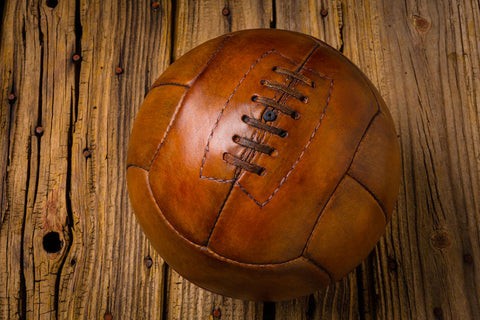
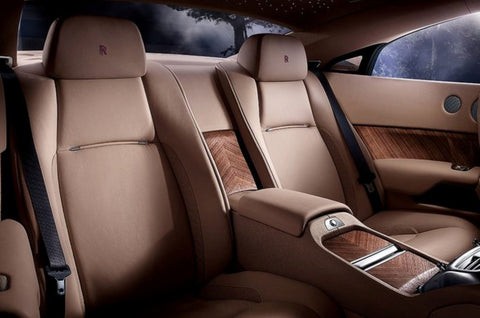
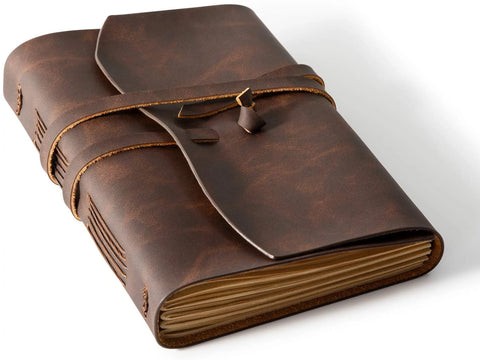
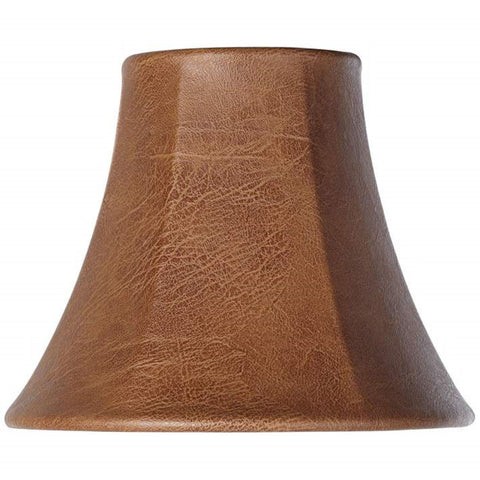
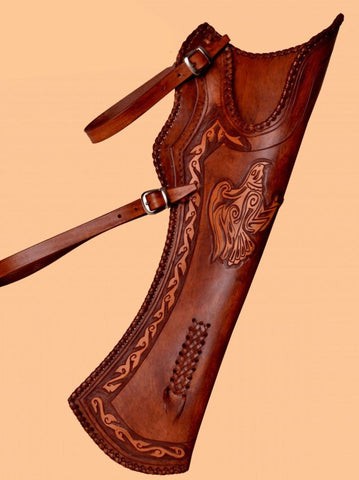
9. Ready to Learn More?
We hope this comprehensive guide has answered your question: what is leather made of? From its origins to its many applications and ethical considerations, leather is a material with a rich history and a complex future.
Do you have more questions about leather or other fascinating topics? Don’t hesitate to ask! At WHAT.EDU.VN, we’re dedicated to providing clear, accurate, and engaging answers to all your questions.
Have a question that needs answering? Contact us today!
- Address: 888 Question City Plaza, Seattle, WA 98101, United States
- WhatsApp: +1 (206) 555-7890
- Website: WHAT.EDU.VN
At WHAT.EDU.VN, we understand the challenges of finding quick, reliable answers to your questions. You shouldn’t have to struggle with endless searches or worry about the cost of expert advice. That’s why we offer a free platform where you can ask any question and receive prompt, knowledgeable responses.
Don’t let your curiosity wait! Visit what.edu.vn now and ask your question for free. Get the answers you need quickly and easily!
We are here to help you explore, discover, and learn. Join our community of curious minds and let’s uncover the answers together!
